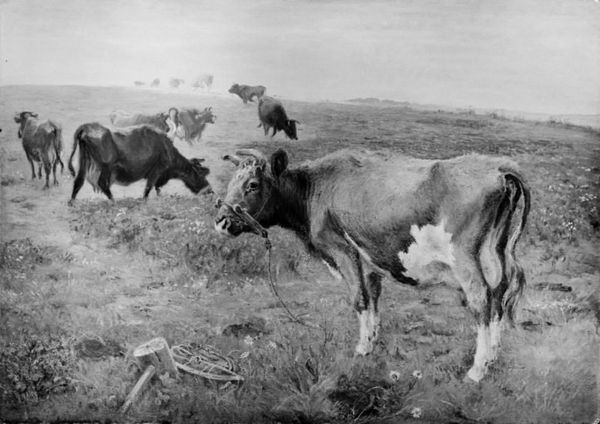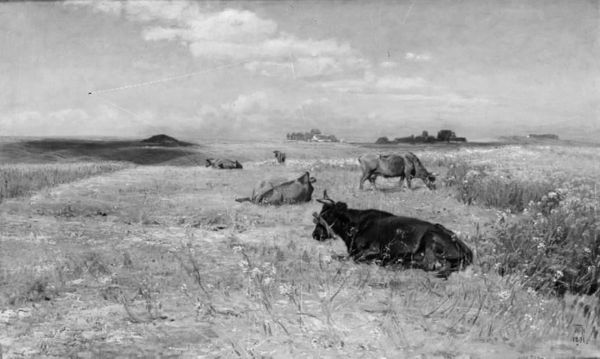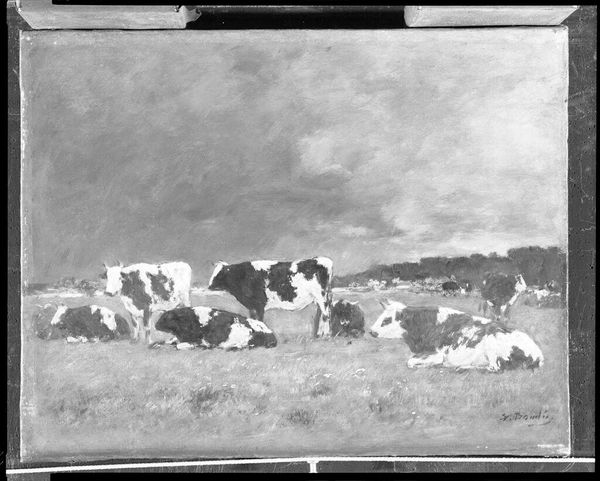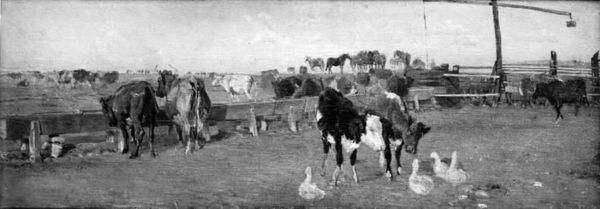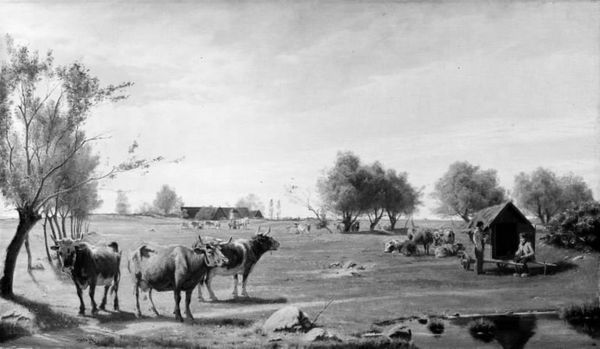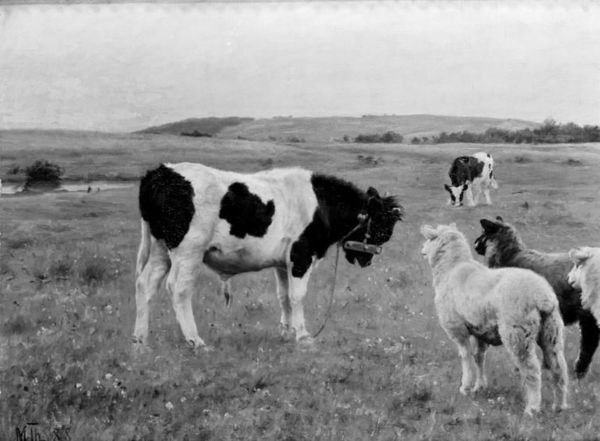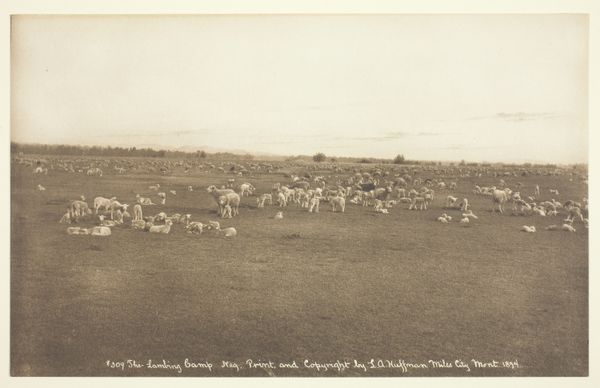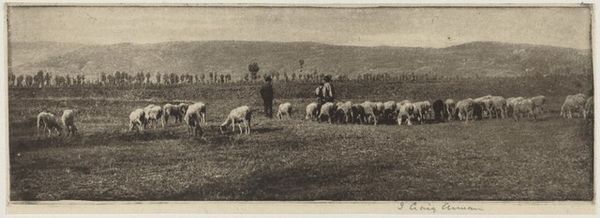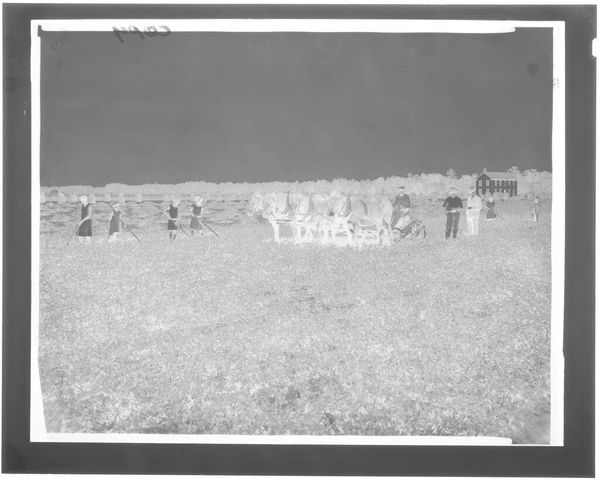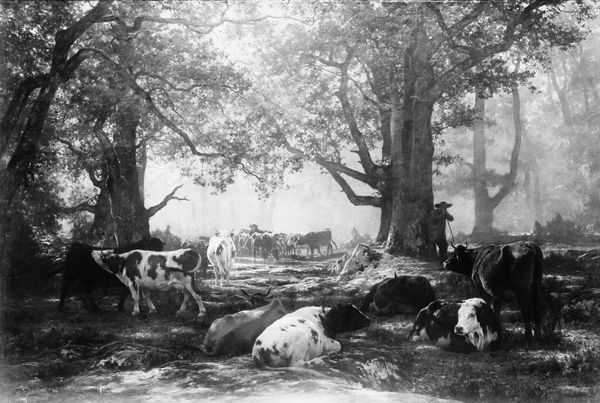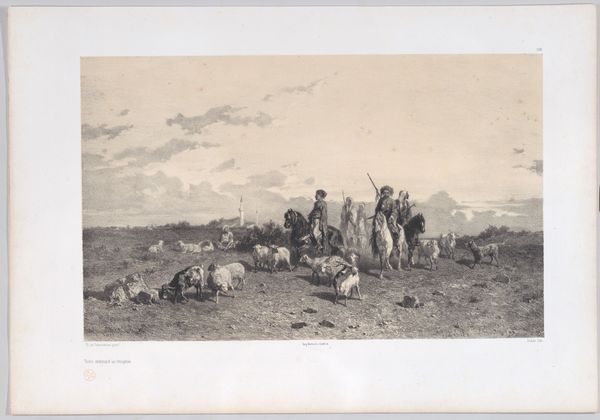
painting, plein-air
dutch-golden-age
painting
plein-air
landscape
genre-painting
realism
monochrome
Dimensions: 114.5 cm (height) x 189 cm (width) (Netto)
Editor: So, this is Carl Bøgh’s “På malkepladsen,” made in 1870. It’s a monochrome painting, an outdoor scene with cattle, people, and sky… There's a palpable quietude here. I'm curious, what elements stand out to you in this piece? Curator: I'm immediately drawn to the way Bøgh depicts the labor involved in dairy farming, something we often overlook when consuming milk and dairy products. Consider the scale and labor of agriculture. The use of monochrome adds another layer. Is it about cost? Lack of access? Editor: It is interesting to think about. I hadn't considered the materials themselves as communicating a statement about the realities of farm work. Curator: Precisely. This wasn't a commissioned work intended to hang in a wealthy household. It reflects the material realities of the time. Did Bøgh make a choice in depicting this subject matter knowing his access to colour or a larger canvas was limited? Editor: I see what you mean. The constraints became a part of the story. How does the plein-air aspect factor into this? Was it merely about capturing the light, or was there a deeper connection to the process? Curator: I think it's inextricably linked. Plein-air suggests a direct engagement with the materials, environment, and even the livestock themselves, which adds another layer to our understanding of the artistic choices Bøgh made and to this working landscape.. Editor: That's a fascinating viewpoint. Considering the labor, the materials, and the painting’s reflection of its own time period makes you view a simple pastoral painting as a product of many circumstances and choices. Curator: Absolutely. Bøgh is showing us more than cows; he’s highlighting the materiality of art-making itself and the social and economic context in which it exists.
Comments
No comments
Be the first to comment and join the conversation on the ultimate creative platform.
